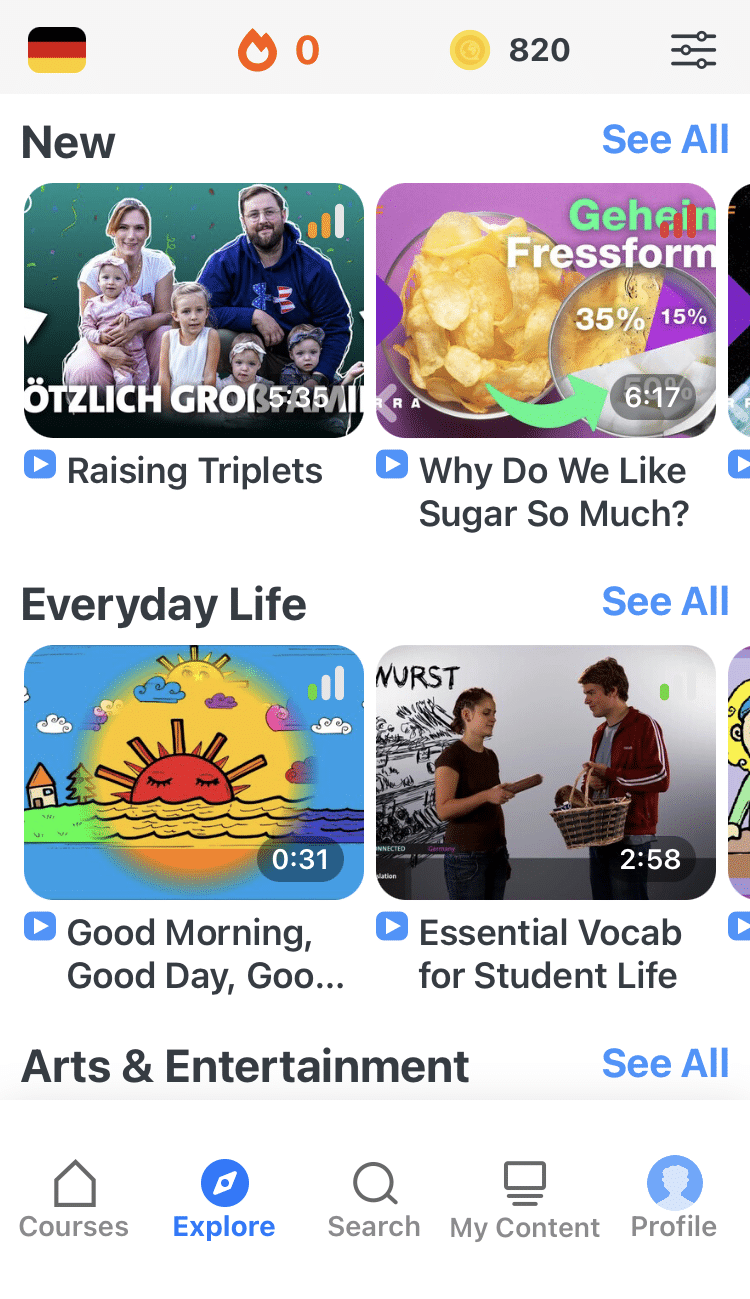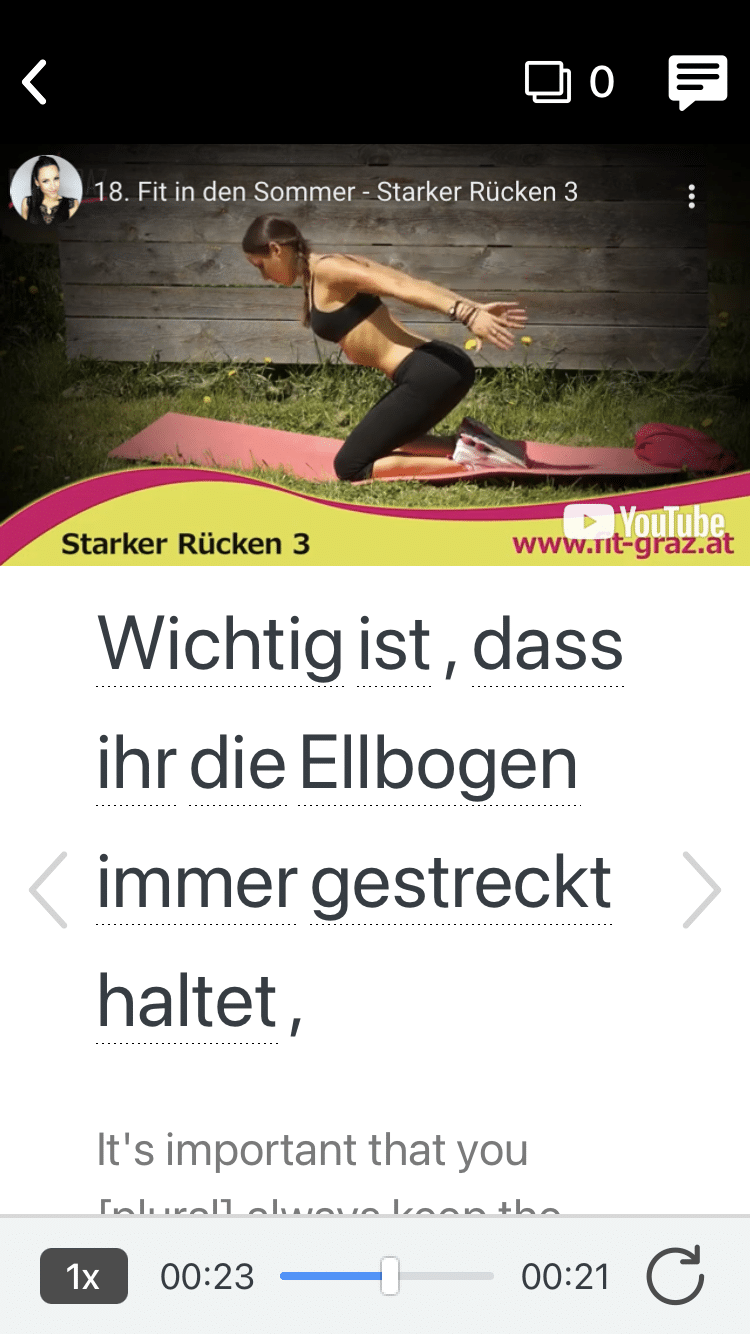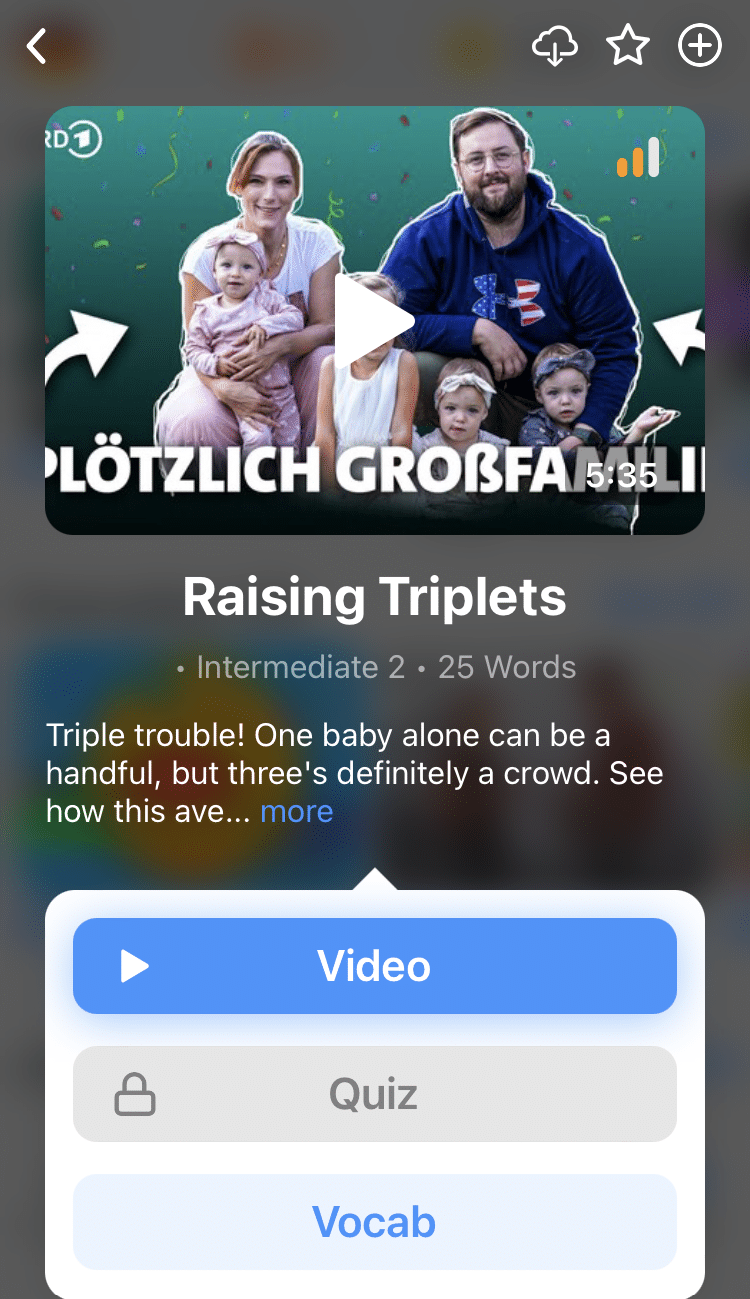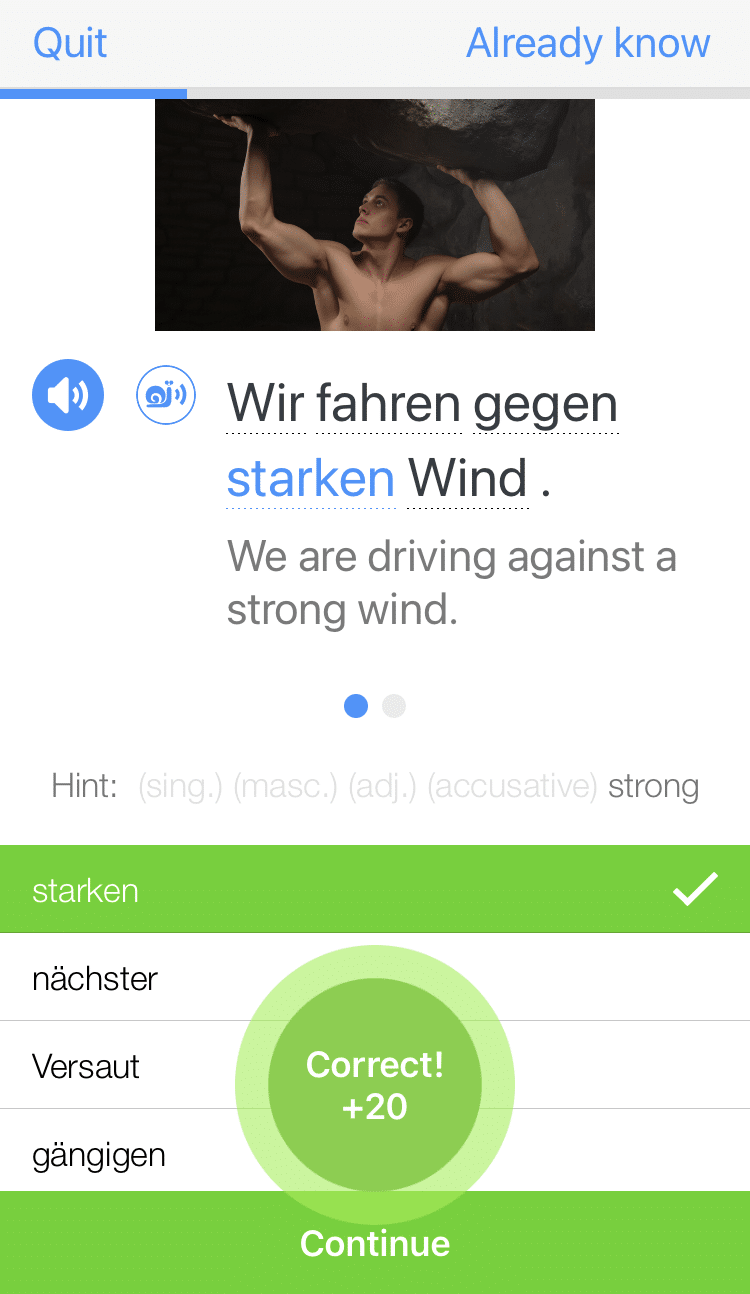
German Present Perfect Tense
If you’re struggling to perfect the German present perfect tense, or if you’ve just been avoiding it altogether, fear not.
This guide will set you on track to grammatical success!
It’s not something you can afford to skip. After all, when you’re learning a new language, you have to be comfortable with all of its tenses.
So if you want to achieve German fluency, use this handy guide to pick up one more important tense!
Contents
- What Is the German Present Perfect Tense?
- How to Form German’s Present Perfect Tense
- And One More Thing...
Download: This blog post is available as a convenient and portable PDF that you can take anywhere. Click here to get a copy. (Download)
What Is the German Present Perfect Tense?
Strictly speaking, the present perfect tense doesn’t exist in German. The closest equivalent is das Perfekt (the perfect tense).
Essentially, the German present perfect tense refers to a past event or action which has been completed. This is in contrast to the English present perfect tense, which refers to an event that started in the past and continues (or might continue) in the present.
That being said, das Perfekt and its closest English counterpart have a similar construction. Both of them consist of two key elements:
- An auxiliary verb. In the English sentence “I have eaten,” “have” is the auxiliary verb.
- Past participle of the verb. In the same sentence above, the past participle of the verb “eat” is “eaten.”
So how does the construction of das Perfekt work in German? That’s where the following sections come in!
How to Form German’s Present Perfect Tense
1. Choose Between Haben or Sein
In German, you either use haben (to have) or sein (to be) as your auxiliary verbs. For das Perfekt, you need to know how to conjugate these two in the present tense.
Generally, haben is used to form a Perfekt sentence.
However, there are a couple of cases where you use sein instead:
- When the past participle is a verb of movement like gehen (to go) and fahren (to travel): For example, you’d say “Ich bin nach Amerika gefahren” (I went to America) or “ Wir sind ins Supermarkt gegangen.” (We went to the supermarket.) Here, you can see that bin (am) and sind (are) both come from the verb sein, rather than haben.
- To signify a change of condition: For example, you’d say “Sie ist leztes Jahr gestorben.” (She died last year.)
Keep the above in mind, and you’ve almost nailed the auxiliary verb part of the Perfekt equation!
I say “almost,” because there are two important exceptions to remember.
Bleiben and Sein: Non-movement Verbs That Use the Auxiliary Verb Sein
Despite not signifying movement or a change of state, the verbs bleiben and sein use sein as their auxiliary verb in the present perfect tense. They also have irregular past participles.
To wit:
| Non-movement Verbs That Use the Auxiliary Verb Sein | Past Participle Form | Example Sentence | English Translation |
|---|---|---|---|
| bleiben (to stay) | geblieben | "Ich bin in einem Hotel geblieben." | I stayed in a hotel. |
| sein (to be) | gewesen | "Sie ist seit gestern krank gewesen." | She has been sick since yesterday. |
Notice how the past participle form of bleiben changes the order of the vowels and doesn’t gain a -t or lose the -en. Meanwhile, sein becomes completely unrecognizable!
This is a lot to take in at once, but kein Stress (no stress)!
When you see these verbs in an online dictionary, they’re usually marked with an asterisk or a similar punctuation mark. If you’re having no luck with a dictionary, you can also check out this helpful article that explains when to use sein in the German present perfect tense.
2. Create the Past Participle According to the Type of Verb
Now that you know how to conjugate the auxiliary verb in das Perfekt, let’s move on to conjugating the past participle of the verb following the auxiliary verb. As you’ll see below, the specific conjugation rules depend on what type of verb you’re using.
Regular Verbs
For regular verbs, the German past participle is easy to form. All you need to do is:
- Add ge- to the beginning of the infinitive verb. For example, kaufen (to buy) becomes gekaufen.
- Take -en off the end of the infinitive verb. Gekaufen now becomes gekauf.
- Replace -en with a -t. Finally, gekauf becomes gekauft , which is the Perfekt form of kaufen.
Now, let’s use gekauft in a sentence:
“Ich habe das Kleid gekauft.” (I have bought the dress.)
You can see that, following the TeKaMoLo rule (Temporal, Kausal, Modal, Lokal—the rule that governs the order of German adverbial phrases in a sentence), the auxiliary verb always goes in the second position.
The only exception to this rule would be a sentence with a subordinating conjunction like weil (because), which would send the verb to the end.
Strong Verbs
Strong verbs are verbs that are irregular in their past participle form. They’re bound to get on your nerves from time to time!
Here’s how their past participle is formed:
- Keep the -en of the infinitive. Also, don’t add a -t at the end.
- Change the stem. The stems of strong verbs (the part of the infinitive before the -en) also change, often by changing or rearranging the vowels.
A few examples you’re likely to use every day include:
| Examples of Strong Verbs and Their Past Participle Forms | English Translation | Past Participle Form |
|---|---|---|
| gehen | to go | gegangen |
| finden | to find | gefunden |
| schreiben | to write | geschrieben |
While you’ll ultimately have to memorize these annoying irregular verbs, don’t try to fit them all into your brain at once! Most German textbooks have a list of strong verbs you can consult if you’re ever unsure.
Mixed Verbs
As their name implies, these verbs are a mix of strong and weak verbs.
When forming the past participle of a mixed verb, you need to:
- Change the -en of the infinitive to -t. This is similar to what you do with regular, weak verbs.
- Change the stem. Just like those of strong verbs, mixed verbs’ stems change.
Some common examples include:
| Examples of Weak Verbs and Their Past Participle Forms | English Translation | Past Participle Form |
|---|---|---|
| bringen | to bring | gebracht |
| wissen | to know | gewusst |
Again like strong verbs, you’ll simply have to do your best to memorize these irregular verbs, and check a dictionary if you’re not sure about the spelling!
You can get more practice with the different types of German verbs by seeing how they’re used in context by native speakers.
FluentU takes authentic videos—like music videos, movie trailers, news and inspiring talks—and turns them into personalized language learning lessons.
You can try FluentU for free for 2 weeks. Check out the website or download the iOS app or Android app.
P.S. Click here to take advantage of our current sale! (Expires at the end of this month.)
Separable Verbs
Separable verbs are (true to their name) verbs with separable prefixes at the beginning that change the definition of the stem verb. For example, when you add auf to hören (to hear), it becomes aufhören , which means “to stop.”
To form the past participle of a separable verb, you need to add the ge- between the prefix and the verb.
This might sound more complicated than it is, so here are a couple of examples to help you visualize the rule:
| Examples of Separable Verbs and Their Past Participle Forms | English Translation | Past Participle Form |
|---|---|---|
| aufhören | to stop | aufgehört |
| anrufen | to call | angerufen |
See? It’s not that tricky!
Inseparable Verbs
Inseparable verbs are also a little confusing in the present perfect tense, as some do not have a ge- in their past participle form. This is usually the case with verbs that start with be-, ver- and miss-.
Some examples of these irregular verbs include:
| Examples of Inseparable Verbs and Their Past Participle Forms | English Translation | Past Participle Form |
|---|---|---|
| missbrauchen | to misuse | missbraucht |
| verkaufen | to sell | verkauft |
As you can see, these verbs keep the -t in their past participle forms like the weak, regular verbs, so you just need to remember not to add a ge-!
Verbs Ending In -ieren
Finally, you need to be careful with verbs that end in -ieren. Like some inseparable verbs, these change the -en to a -t in their past participle forms, but don’t have a ge- at the beginning.
For example, studieren (to study) simply changes to studiert .
Do your best to memorize as many of these as possible, but remember: there’s always a dictionary or app at your disposal if you get stuck!
Now you know all there is to know about the German present perfect tense!
This tense catches a lot of German learners off guard, but don’t worry. Consulting this guide will help you become a present perfect ninja in no time.
There’s a whole host of online German tutorials to help you fully grasp the German present perfect tense. It’s just a matter of challenging yourself, learning to be disciplined and forcing yourself to practice!.
Another way to practice is to make flashcards for all of the strong and weak verbs. Regular use of these cards will help this sticky, irregular tense stick in your brain in no time.
Also, remember to keep speaking! The more you use irregular verbs, the faster you’ll pick them up. Keep up those conversations if you want to be the master of das Perfekt.
Download: This blog post is available as a convenient and portable PDF that you can take anywhere. Click here to get a copy. (Download)
And One More Thing...
Want to know the key to learning German effectively?
It's using the right content and tools, like FluentU has to offer! Browse hundreds of videos, take endless quizzes and master the German language faster than you've ever imagine!
Watching a fun video, but having trouble understanding it? FluentU brings native videos within reach with interactive subtitles.
You can tap on any word to look it up instantly. Every definition has examples that have been written to help you understand how the word is used. If you see an interesting word you don't know, you can add it to a vocabulary list.
And FluentU isn't just for watching videos. It's a complete platform for learning. It's designed to effectively teach you all the vocabulary from any video. Swipe left or right to see more examples of the word you're on.
The best part is that FluentU keeps track of the vocabulary that you're learning, and gives you extra practice with difficult words. It'll even remind you when it’s time to review what you’ve learned.
Start using the FluentU website on your computer or tablet or, better yet, download the FluentU app from the iTunes or Google Play store. Click here to take advantage of our current sale! (Expires at the end of this month.)







